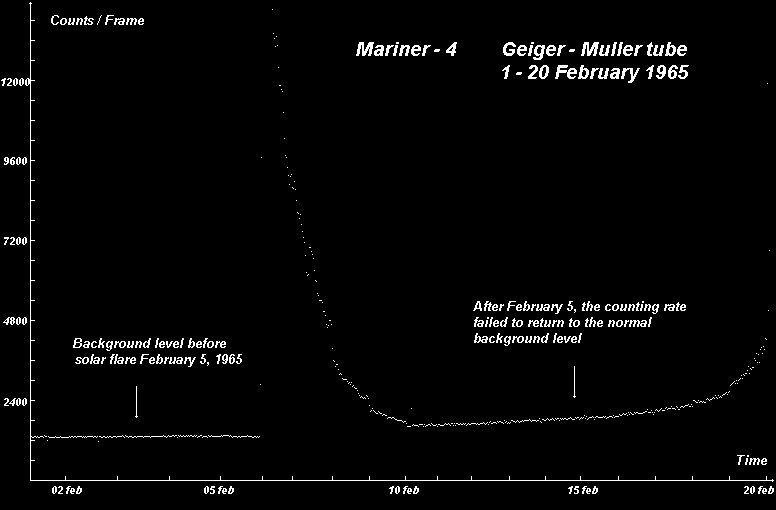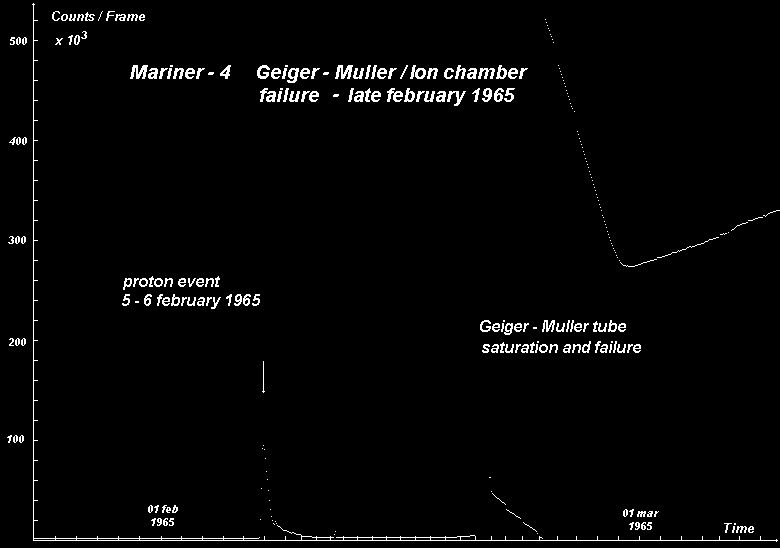|
|
|
Detectors Based on the Ionization of Gas
The basic principle of ionization detectors is the passage of a charged particle through a gas (or liquid),
leaving behind ion pairs which are then separated, accelerated and collected using electric fields.
The strength of the field is the fundamental difference between the ionisation
chamber, the proportional counter, and the geiger counter.

Number of ion pairs formed in a gas-filled ionization chamber as a function of anode voltage.
Ion Chamber
When a low voltage is applied to a gas ionization detector the only charges collected are the charges
produced in the initial ionization caused by a passing particle. Thus, the detectors used at low
voltages are called ionization chambers.
Detector in this mode is insensitive to the voltage, the output signal is weak, and corresponds to the number of primary electrons.
Measurements taken with ion chamber can be applied indirectly to the measurement of absorbed
dose (energy absorbed per unit mass).
Proportional counter
At slightly higher voltages, the charges freed in the initial ionization are accelerated quickly
enough to ionize other electrons in the gas. Those electrons ionize other electrons and so on,
causing a cascade or avalanche. In this voltage regime the number of particles liberated by secondary
interactions is proportional to the number of ions produced by the passing ionizing particle.
Hence, these gas ionization detectors are called proportional counters.
Geiger-Muller counter
Geiger-Mueller counters operate under even higher voltages. When radiation passes through the detector,
breakdown occurs, i.e. the gas becomes saturated with ions. The signals from Geiger-Mueller counters
are roughly the same size, independent of the initial number of ions created by the passing particles.
The Geiger-Muller counter produces many more electrons than does a proportional counter, therefore, it is
a much more sensitive device.
The solar flare radiation of February 5 was apparently the cause of damage to the GM tube; after
February 10, this damage caused data from the tube to become unusable. This failure, in turn,
affected the power supply of the instrument which was common to both the GM tube and the ionization
chamber. After February 5, the counting rate failed to return to the normal background level.
Then, after approximately 10 days of operation at a level 30 percent higher than normal, the
counting rate rose sharply from 40 counts/sec to 18 000 counts/sec and fluctuated between
18 000 and 6000 counts/sec until March 17. On that date, the counting rate dropped to zero
and remained there permanently.

Diagram description:
Tapes : K-0125, K-126, K-128
23000 frames extracted
Transmision rate - 8 1/3 bps
Time period: 01 february - 20 february, year 1965
Geiger-Muller/Ion chamber tube - 5800 measurements extracted
Averaging - 8 measurements per pixel

Diagram description:
Tapes : K-0125, K-126, K-128
72000 frames extracted
Transmision rate - 8 1/3 bps
Time period: 18 january - 07 march, year 1965
Geiger-Muller/Ion chamber tube - 18000 measurements extracted
Averaging - 20 measurements per pixel
Last Updated: 2002.05.31